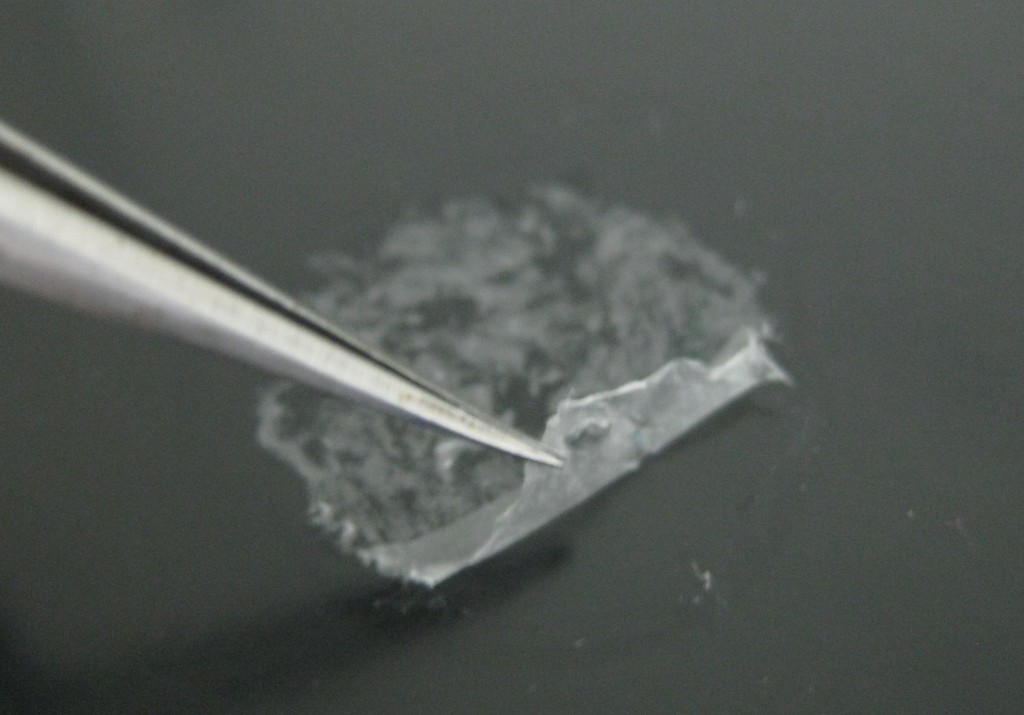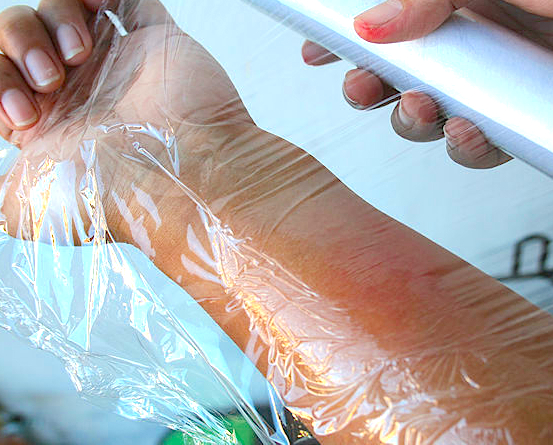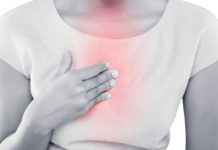Wrapping wound dressings around fingers and toes can be tricky, but for burn victims, guarding them against infection is critical. Now scientists have reported on the development of novel, ultrathin coatings called nanosheets that can cling to the body’s most difficult-to-protect contours and keep bacteria at bay.
Wound healing, as a normal biological process in the human body, is achieved through four precisely and highly programmed phases: hemostasis, inflammation, proliferation, and remodeling. For a wound to heal successfully, all four phases must occur in the proper sequence and time frame. Many factors can interfere with one or more phases of this process, thus causing improper or impaired wound healing. One major cause is bacterial infection.
Yosuke Okamura, Ph.D., explains that existing wound dressings work well when it comes to treating burns on relatively flat and broad areas. But the human body has curves, wrinkles and ridges that present problems for these dressings. So Okamura’s team developed a novel biomaterial out of tiny pieces of nanosheets that are super-flexible and sticky.
“The nanosheets can adhere not only to flat surfaces, but also to uneven and irregular surfaces without adding any adhesives,” he says.
 That would make a big difference in the way burn victims are treated. According to the Centers for Disease Control and Prevention, someone is injured by fire every 30 minutes. Burn wounds are vulnerable to infection, and keeping them sealed off from bacteria is essential for a successful recovery.
That would make a big difference in the way burn victims are treated. According to the Centers for Disease Control and Prevention, someone is injured by fire every 30 minutes. Burn wounds are vulnerable to infection, and keeping them sealed off from bacteria is essential for a successful recovery.
Okamura’s team at Tokai University makes the nanosheets out of a biodegradable polyester called poly(L-lactic acid), or PLLA. They put the material into a test tube with water and spin it, which breaks up the sheets into even smaller pieces. When they pour the liquid onto a flat surface, the tiny fragments overlap in a patchwork and dry as a single nanosheet.
They tested out the nanosheets’ ability to coat small and irregular shapes by dipping different things into the mixture, including a metal needle and a mouse’s fingers. The nanosheet patchwork effectively covered even the smallest bumps and wrinkles on the mouse’s digits, and after the material dried, it clung in place.
When the researchers tested the nanosheets on burns, the dressing effectively kept out the common bacteria, Pseudomonas aeruginosa. This species of pathogen is often a culprit in skin infections and is notorious for causing hospital-acquired infections that can be deadly. Multi-drug resistant strains are also a serious concern.
The dressing protected wounds from infection for three continuous days. With an additional coating, the nanosheets kept bacteria out for a total of six days. That means the material, if eventually approved for human patients, could cut down the number of times dressings have to be changed. With an eye toward human clinical trials, the researchers are currently planning large-scale animal tests and safety tests.
In addition to PLLA nanosheets, Okamura’s group has recently started developing a novel set of similar, super-flexible, patchwork coatings composed of polymers with a phosphorylcholine group. They have shown that these materials are compatible with blood and could act as coatings for medical devices, such as catheters.
Source: American Chemical Society (ACS), http://bit.ly/1uHAZrx















